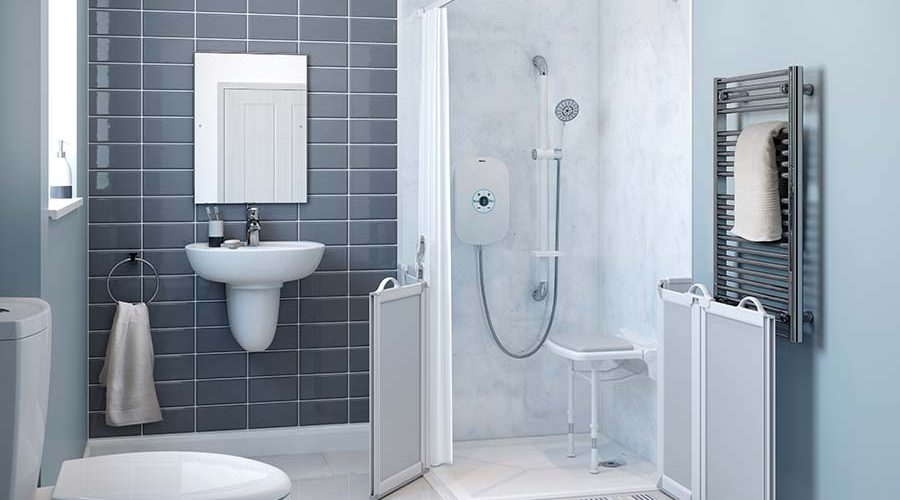In November last year, an influential coalition of housing and charity groups, including RIBA and Age UK, said that “the next Government should make all new homes accessible and adaptable”. The open letter went on to say: “Without action, we face an ever-mounting bill, with councils spending greater sums on trying to adapt homes retrospectively and the costs to our health and social care systems spiralling”.
AKW Ltd.
Although there are many factors impacting inclusive housing, there still remains a highly valid social and business argument for increasing the amount of suitable housing stock in this area of need. Here Stuart Reynolds, Head of Product and Marketing at AKW, explains how specifiers in the public arena can create well-designed wheelchair accessible bathrooms, cost-effectively.
Good wheelchair accessible bathroom design
The first thing to understand is that well-designed wheelchair accessible bathrooms needn’t cost the earth but should incorporate some well-designed necessities, so that the space is fit-for-purpose and effective in the long-term.
So, what does a well-designed bathroom look like when it comes to a wheelchair accessible bathroom? There are a range of common elements that should be included when specifying or installing any wheelchair accessible bathroom. The following is some best practice advice taken from the Building Regulation’s Doc M for wheelchair user dwellings and also from Kate Sheehan, Occupational Therapist of The OT Service, for a well-designed wheelchair accessible bathroom. For the full story, download the wheelchair design guide on AKW’s website:
Promote movement around the space
Manoeuvring into and inside the bathroom are key considerations.
With this in mind:
• Prioritise level access throughout the space – use a wetroom former, or a recessed or ramped shower tray
• Ensure doors are outward-facing – this increases space in the bathroom and helps in case of emergencies
• Ensure easy and safe level shower access – this can be done by using a corner design for the shower space
• Incorporate a raised height toilet – to allow for easier transfer from wheelchair to toilet seat
• Minimise any gradient near the WC – a level access shower area has a gradient to help the water drain. Ensure that this is not part of the WC transfer zone, to minimise wheelchair tipping hazards.
• Ensure toilet accessibility on both sides if possible – this is best practice advice and facilitates transfers, personal assistant support and potential changes in need for the wheelchair user
• Ensure that there is no external plumbing and pipework – to promote ease of movement around the space, all pipework needs to be concealed within the walls
• Think about the placement of radiators or towel rails – these can hinder wheelchair movement. Always opt for low surface temperature heat sources and consider underfloor heating as an alternative.
• Use slip-resistant flooring to maximise the traction of the wheelchair and minimise falls
• Use a wall-hung sink – to improve access. Consider one with handles or a concave design to make things easier for a wheelchair user. The sink’s height should also be tailored to the user’s requirements (although compromises might be needed if the space is also used by the wider family).
Good design promotes independence
The aim of any accessible bathroom is to promote the dignity of the user. If they are also able to use the space independently, then these are key elements to include:
• Think about shower placement as this will impact movement around the space. For example, fittings can encroach up to 500mm on one side of the space (not both).
• Use technology to promote independence – for example, AKW’s SmartCare Plus remote controlled shower helps the wheelchair user control everything with no additional assistance
• Add a handle or rail to the door to help the wheelchair user close the door behind them, without the need for additional assistance
• Tailor the placement of grab rails to suit the abilities of the wheelchair user. Think about rail placement beside the WC, washbasin and level access shower. Depending on the bathroom’s layout, fold-up rails may benefit some users and any personal assistants.
• Incorporating a bidet promotes user independence. If this is something that the wheelchair user would benefit from, remember to include an isolated electrical supply in compliance with Building Regulations for this.
• Think about the user’s reach – to ensure that all of the essential fixtures and fittings (such as the toilet flush, light switches and bath/shower controls) are at a height and reach that supports functional use.
Good design makes life better
There is no ‘one size fits all’ when it comes to accessible wheelchair design, so think about the following:
• Does the wheelchair user have small children in the house? For some, removing the bath could impact on their role as a parent. In this case, if there is space, include a level access shower and a bath.
• Does the wheelchair user have a visual impairment or dementia?
Refection, glare and contrast are all key to the selection of tiles, flooring and fixture colours. For more information on how to design bathrooms for these specific needs, visit our website and check out AKW’s visual impairment and dementia bathroom design guides.
Good design needn’t be expensive. For more details on how to ensure the best possible wheelchair accessible bathroom design, why not download the new occupational therapist co-written guide – www.akw-ltd.co.uk/wheelchairbathroomguide.









